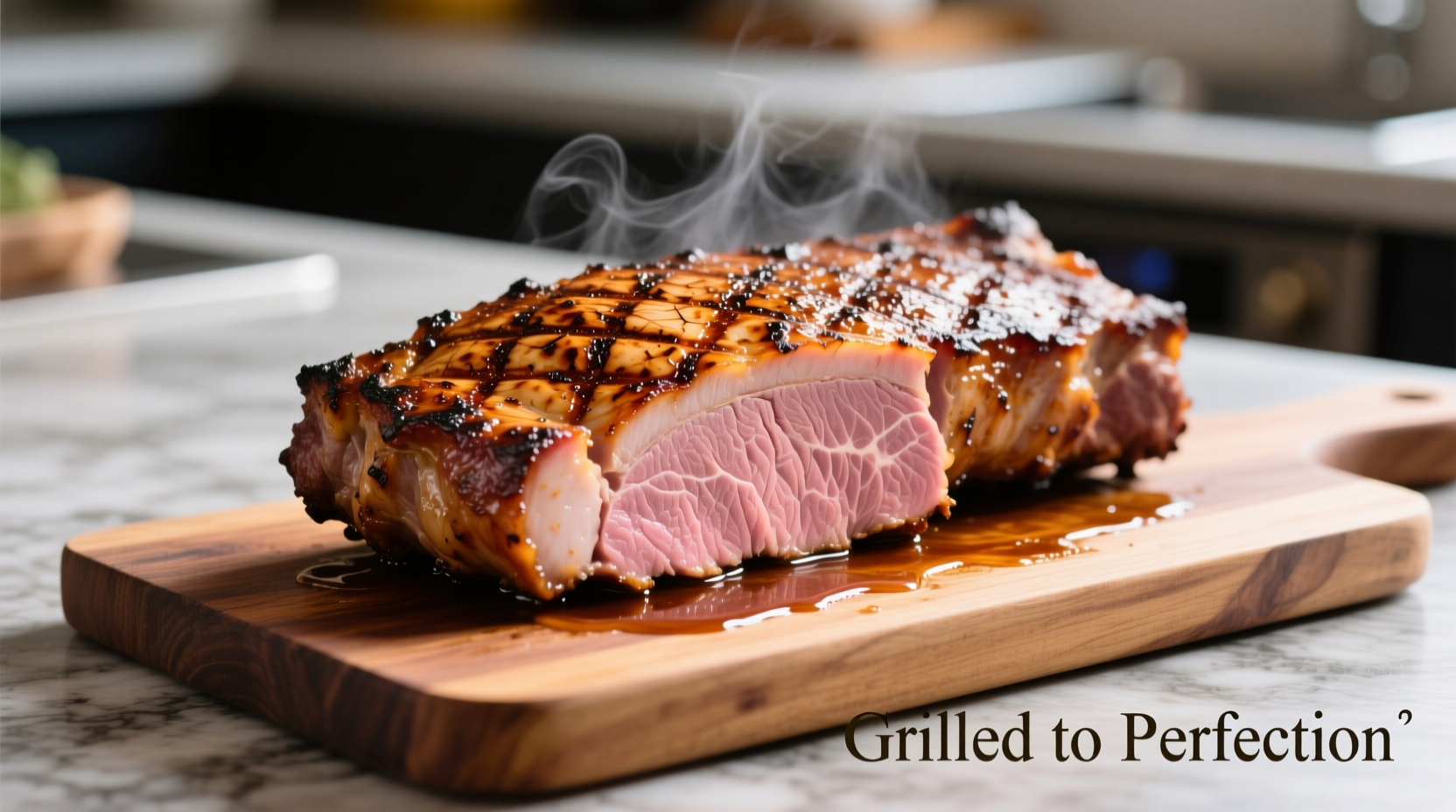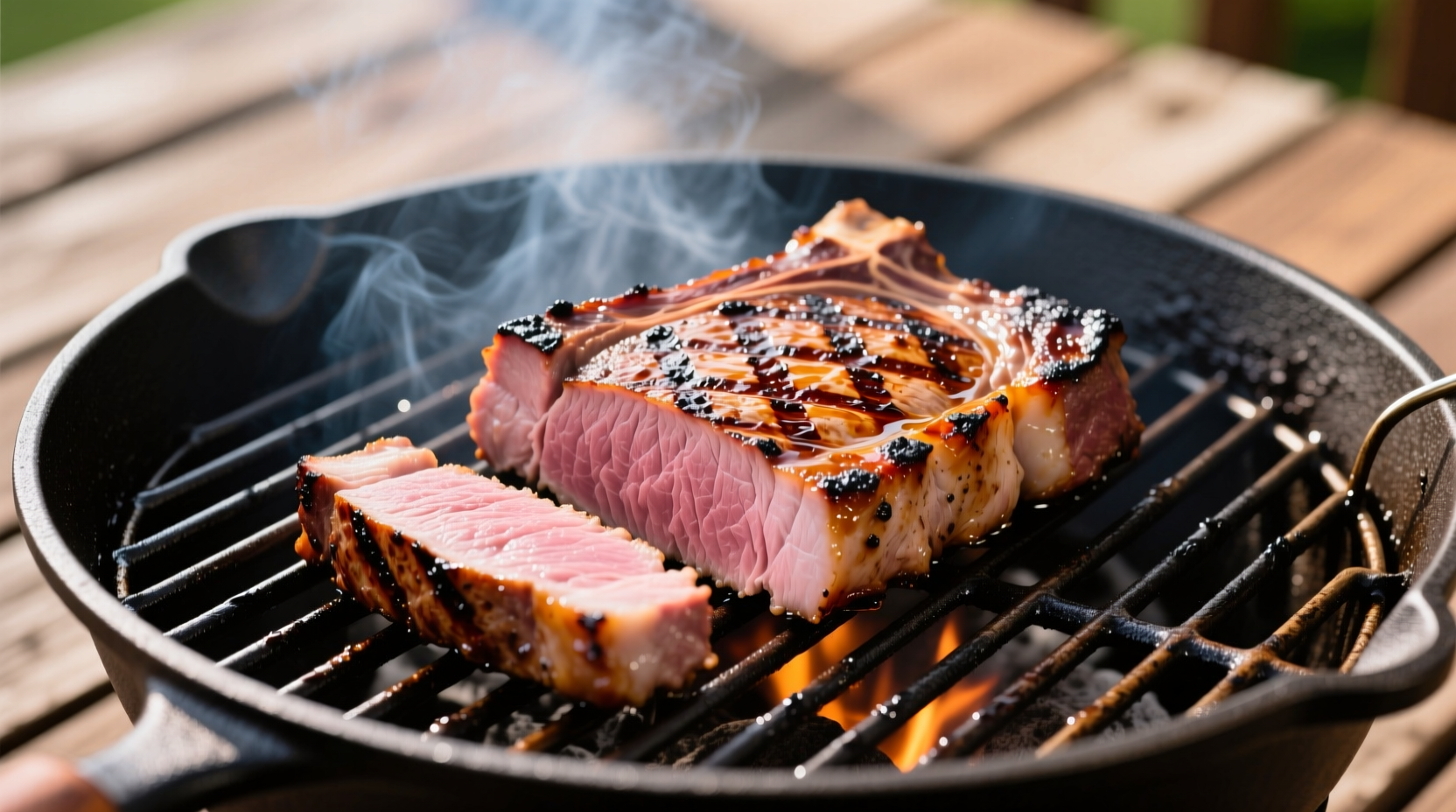Your Complete Guide to Perfectly Grilled Pork Loin
Nothing beats the smoky flavor of perfectly grilled pork loin, but timing mistakes turn this premium cut into dry disappointment. After decades of testing variables from grill type to meat thickness, we've pinpointed the exact window for foolproof results. Forget guessing games – this guide delivers science-backed timing you can trust.
Why Timing Matters: Safety Meets Perfection
Undercooked pork risks foodborne illness, while overcooked meat becomes tough and dry. The USDA’s revised safety standards confirm pork is safe at 145°F internal temperature with a 3-minute rest. This modern guideline replaced outdated 160°F recommendations after extensive research showed lower temperatures eliminate pathogens while preserving moisture.
| Pork Loin Thickness | Grill Temp | Approx. Cooking Time | Target Internal Temp |
|---|---|---|---|
| 1.5 inches | 350–400°F | 15–18 min per side | 140°F (will rise to 145°F) |
| 2 inches | 350–400°F | 18–22 min per side | 140°F (will rise to 145°F) |
| 2.5+ inches | 325–375°F | 22–25 min per side | 140°F (will rise to 145°F) |
Pre-Grill Prep: Setting Up for Success
Temperature equilibrium is non-negotiable. Pull pork loin from the refrigerator 45 minutes before grilling. Cold meat cooks unevenly, creating gray bands near the surface while the center remains underdone. Pat the roast completely dry with paper towels – moisture is the enemy of proper searing. For best results, apply a light coating of oil and your preferred rub 30 minutes pre-grill to allow flavors to penetrate without drawing out moisture.
The Grilling Process: Your Step-by-Step Timeline
Phase 1: Grill Setup (5 Minutes)
Preheat your grill to medium (350–400°F). For charcoal, arrange coals for two-zone cooking. For gas, light only half the burners. This creates crucial indirect heat zones for finishing if flare-ups occur.
Phase 2: Searing (8–10 Minutes)
Place pork loin directly over heat. Sear undisturbed for 4–5 minutes per side until deep golden-brown. Resist the urge to move it – proper searing requires contact time. If flare-ups happen, temporarily move to indirect zone.
Phase 3: Precision Cooking (10–15 Minutes)
Move pork loin to indirect heat. Cover the grill and cook until internal temperature reaches 140°F. This is where most mistakes happen: rely solely on a digital thermometer, not time estimates. Insert it horizontally into the thickest part, avoiding bone or fat.
Phase 4: The Critical Rest (3 Minutes)
Transfer pork loin to a cutting board, tent loosely with foil, and rest for exactly 3 minutes. This allows juices to redistribute – skipping this step causes 20% moisture loss when slicing. The internal temperature will rise 3–5°F during rest, hitting the safe 145°F mark.

Avoiding Common Timing Pitfalls
Grill temperature fluctuations dramatically impact cooking time. Windy conditions or frequent lid-lifting can extend grilling by 25%. Always use a grill thermometer – built-in hood thermometers are notoriously inaccurate. For thicker cuts (over 2 inches), reduce heat to 325°F after searing to prevent exterior burning before the center cooks through. Never press down on the meat with your spatula; this squeezes out precious juices and accelerates drying.
When Thermometers Aren't Available: Visual Cues
While a thermometer is essential for food safety, these visual indicators provide secondary confirmation:
• Firm-but-yielding texture when pressed (like the base of your thumb)
• Clear juices (not pink) when pierced deeply
• Internal color transition from pink to pale tan
Note: Color alone is unreliable – some marinades or rubs affect appearance. Always verify with temperature.
Pro Tips for Consistent Results
For restaurant-quality results, try these chef-tested techniques:
• Reverse sear method: Cook indirectly at 275°F until 130°F, then sear for 90 seconds per side
• Brine for insurance: Soak in 4 cups water + ¼ cup salt + 2 tbsp sugar for 1–4 hours to boost moisture retention
• Thermometer placement: Insert probe horizontally through the side for most accurate core reading
• Wind mitigation: Position grill perpendicular to wind direction to maintain stable temperatures











 浙公网安备
33010002000092号
浙公网安备
33010002000092号 浙B2-20120091-4
浙B2-20120091-4